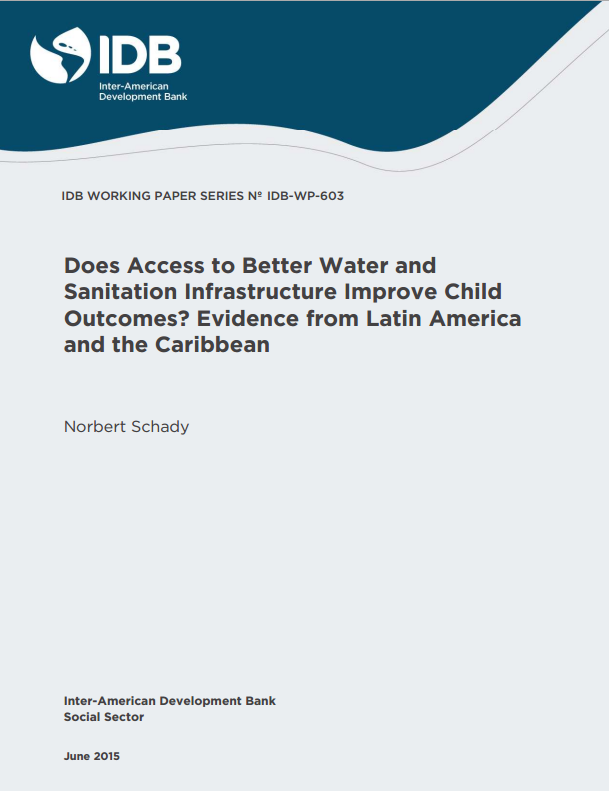Does Access to Better Water and Sanitation Infrastructure Improve Child Outcomes? Evidence from Latin America and the Caribbean
Date
Jun 2015
I review the evidence on access to water and sanitation infrastructure and child outcomes In Latin America. I show that there are large differences in access across countries and, within countries, between households living in urban and rural areas. Many papers in the public health literature show associationsbetween access to clean water sources or improved sanitation, on the one hand, and child outcomes like the incidence of diarrhea or child development, on the other. These papers provide only weak evidence of causality. Stronger evidence comes from a handful of papers that exploit historical accidents in the extension of coverage of water and sanitation infrastructure, although the evidence is limited to child mortality, rather than morbidity, nutritional status, and development. Also, it has generally not been possible to separately estimate the effects of changes in quantity and quality of water because piped water frequently improves both. Given the paucity of the evidence to date, there would be large returns to evaluations that had credibly exogenous sources of variation in access to piped water or sanitation, and traced out the benefits to children, including surviving children, over time.



